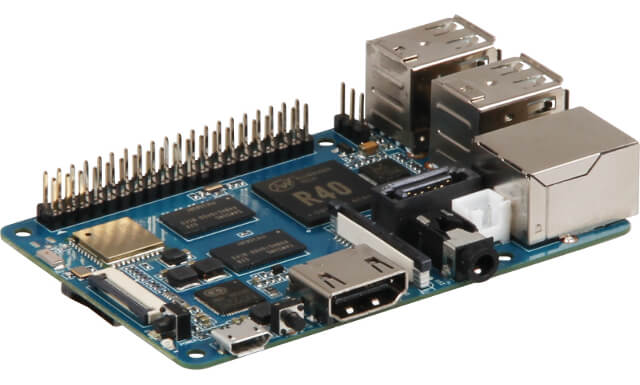Small, inexpensive and versatile – with these characteristics, the Raspberry Pi conquered the developer community a few years ago. Many have since tried to emulate its success, with a wealth of similar mini computers introduced to the market. In this article, we will look at the new Banana Pi M2 Berry: can it stand up to Raspberry Pi?
https://www.youtube.com/watch?v=6BhDj3j0Hrc
Mini computers are a really popular choice for creating your own electronics projects. Whether you want to install your own smart home system or experiment with robotics, the Raspberry Pi has established itself as a great base. Even beginners can set it up in just a few steps, however it is also suitable for advanced electronics projects, thanks to its various functions.
Banana Pi is a similar mini computer, developed by the company ‘Sinovoip’. With the new Banana Pi M2 Berry, the Chinese manufacturer has developed a much-respected competitor that will appeal to technology buffs.
Identical construction to Raspberry Pi
The Banana Pi M2 Berry has the same size and arrangement of connectors as the Raspberry Pi 3, the similarity also reflected in their fruity names. This Banana Pi model is the first to be fully compatible with the Raspberry Pi accessories.This makes it possible to use the large range of expansion boards and housings available for Raspberry Pis.
The Banana Pi M2 Berry is equipped with a 32-bit Quad-Core ARM-Cortex-A7-SoC, of type Allwinner V40. It has a dual core Mali 400 MP2, 500 MHz graphics chip. With a RAM of 1GB DDR3 SD and 733 MHz, it can keep up with the performance of a Raspberry Pi 3. However, it does not have 64-bit support.
Strength in connectivity
The Banana Pi M2 Berry’s greatest strength is its internet connectivity. In addition to pre-installed WiFi and Bluetooth 4.0, it also provides a port for 10/100/1000 Mbit/s Ethernet, covering all conventional network standards. With the Gigabit LAN interface, Sinovoip has an advantage, because the Raspberry Pi offers only 100 Mbit/s.
SATA port for more data throughput
Another important difference between the Banana Pi M2 Berry and the Raspberry Pi is the SATA interface of the new Banana Pi model. A hard drive, an SSD or an optical drive can be connected via the SATA port. Therefore, the new single-board computer also works for projects that collect or require a lot of data. In addition, the Chinese model provides a 5-volt power connector for a 2.5-inch hard drive. However, with more “tuning” the power supply can decrease. If you install an extra hard drive, you should always arrange another adaptor for the power supply.
Other interfaces
In the Banana Pi M2 Berry’s main slots there are: the 40 PIN GPIO (compatible with Raspberry, UART, I2C, SPI, PWM and I2S), the integrated CSI camera interface, the DSI display interface and USB OTG. It also supports a MicroSD memory card. For audio and video, a HDMI connection as well as a 3.5mm jack for headphones or a microphone. The Banana Pi M2 Berry, however, does not have a composite video output like the Raspberry Pi. This is not a problem, though, since the fully HD-capable HDMI output can be used for video broadcasts. Furthermore, the Banana Pi M2 Berry also supports 1080p video output, meaning its limitations are minimal. The Banana Pi also has two buttons for practical use (a reset and a clear button) – one more than the Raspberry Pi.
A real alternative
The Banana Pi M2 Berry has everything to convince a die-hard Raspberry Pi fan – and a bit more. With the Gigabit Ethernet port and the ability to expand the Banana Pi with a hard disk drive, it offers developers the functions they have been waiting for. The biggest advantage is, however, that the changeover from using a Raspberry Pi is almost effortless. Not only can components and instructions for the Raspberry Pi be used simply, the software also won’t need a major rethink, as Raspbian is also supported alongside the operating systems, Debian Linux, Ubuntu Linux and Android.














